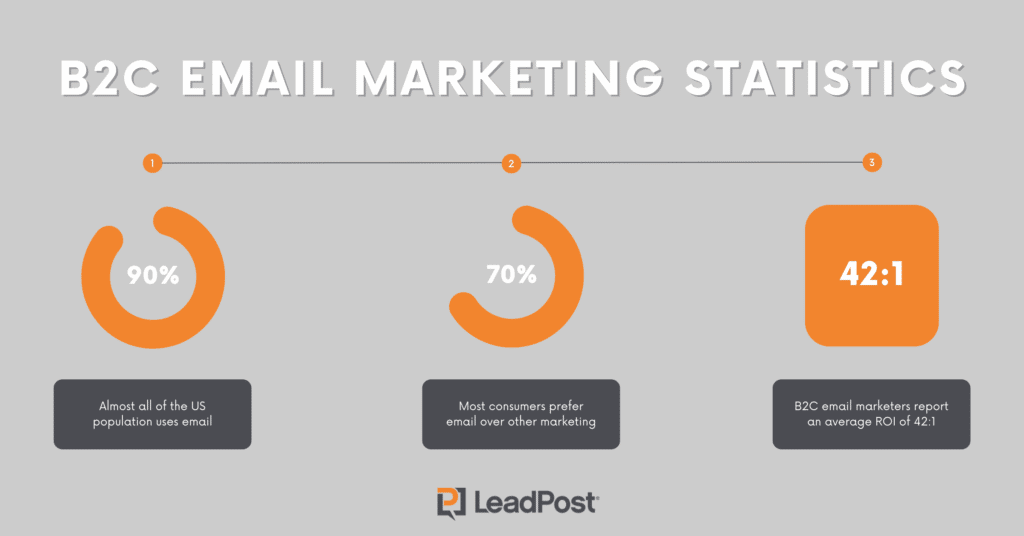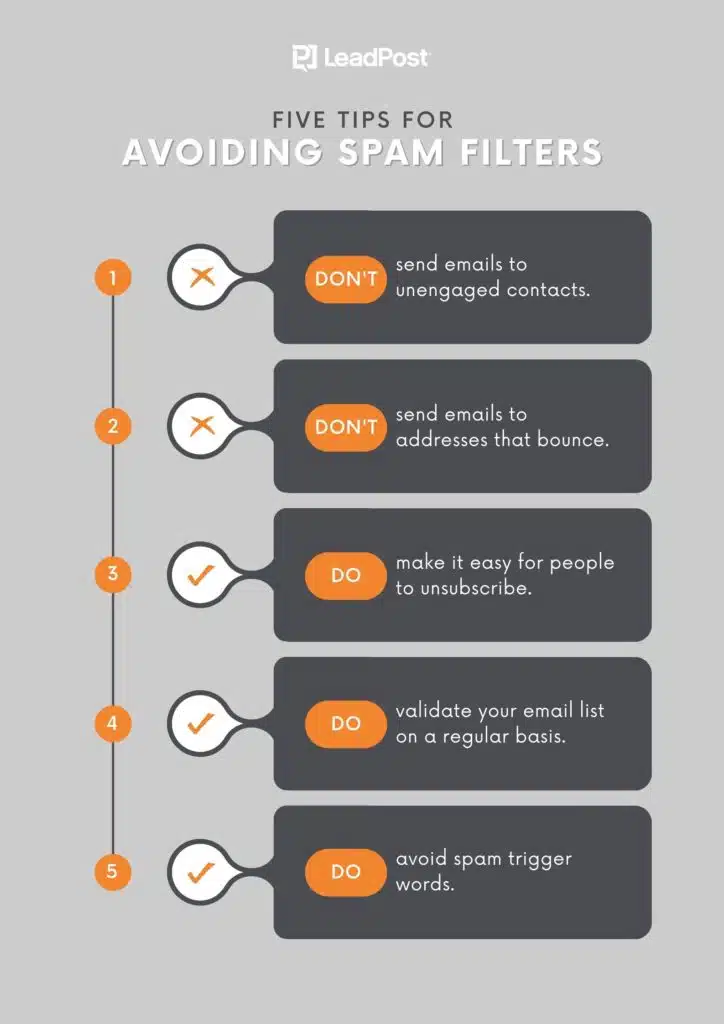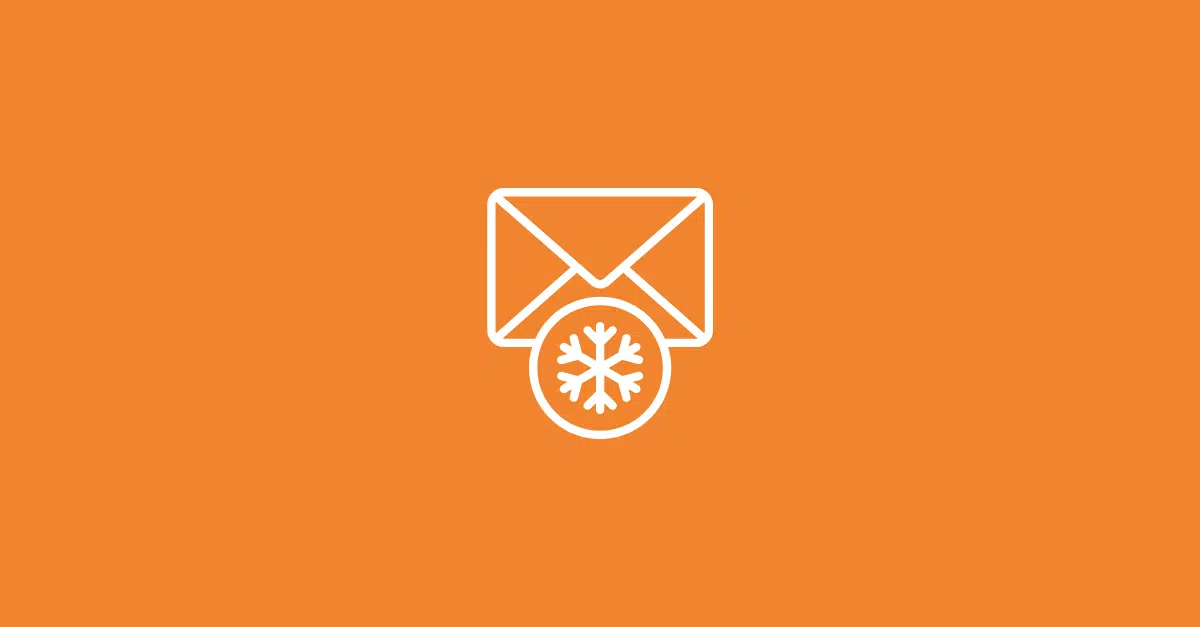How to Increase Sales with B2C Cold Email
If you’re selling a product or service to consumers, B2C cold email is an efficient, cost-effective way to reach your target audience. Here’s why:
- Over 90 percent of the United States population uses email
- Over 70 percent of consumers prefer email over other marketing channels
- Marketers report an average ROI of 42:1 from B2C email marketing campaigns
Still, most people struggle with cold email. It’s not as intimidating as cold calling, but it presents its own challenges. How do you get someone’s email in the first place? How do you avoid their spam filter? And, most importantly, how do you get them to read and act on your email?
We’ll cover the answers to those questions here so you can run effective cold email campaigns.
(If you’re selling to businesses, check out How to Increase B2B Sales with Cold Email instead.)

How to Launch a B2C Cold Email Campaign
There are three things you need to do to execute an effective B2C cold email campaign.
- Email addresses. First, you need people to email. So we’ll cover a few email acquisition tactics you can use to collect the email addresses of people in your target market.
- Messaging. Next, you need compelling cold email copy. Successful B2C cold emails have attention-grabbing subject lines and body copy that drives readers to take action.
- A way to avoid the spam folder. You’ll need to avoid spam triggers so your emails reach their recipients. It’s also essential to follow the anti-spam laws in your country and the countries to which you’ll be sending emails.
B2C Email Acquisition
There are many ways to build your email list. We’ve covered those in-depth in our guide to email acquisition. Here are the three best ways to do it:
- Visitor identification. Website visitor identification identifies visitors who don’t convert on your site and sends their email addresses to your CRM. Each record costs less than $0.25 a record. And, since the people you’re emailing know your brand and are interested in your product or service, they’ll be more responsive to your email.
- Email retargeting. Email retargeting uses visitor identification to trigger emails based on the website content a visitor viewed.
- Referral partners. A referral partner can be any non-competitor with contacts in your target market. They can introduce you to their contacts so that recipients are more receptive to your emails. In return, you can offer a referral fee or introduce them to your contacts.
Writing B2C Cold Emails
We’ve written a guide with eight B2C email marketing tips and another on how to write a marketing email. Our recommendations there apply to cold emails as well.
Personalization is key to unlock higher engagement rates. Instead of generic greetings, dive into data-driven personalization by utilizing insights from website visitor identification tools. Tailor your email content to reflect the recipient’s interests based on their website behavior, such as the specific pages they visited or products they showed interest in.
For instance, if a visitor spent time on a page dedicated to outdoor gear, your email could highlight your latest offers or products in that category. This level of personalization shows the recipient that you understand their needs, significantly boosting the likelihood of engagement.
But before you start writing, stop to think about what will be relevant to people who don’t have a pre-existing relationship with your company. They’re probably not ready for a free trial or a demo. It’s extremely unlikely that they’ll want to schedule a meeting with you. They may not even trust you enough to click a link.
The goal of a cold email campaign is different from most other email marketing campaigns. You don’t want purchases or demo signups. You want a reply.
The key to a successful B2C cold email is to start a conversation. You’ll likely be automating the initial email sequence in order to scale the campaign, but your goal should be to elicit a response from the prospect so that someone on your team can engage with them.
Get Creative
Standing out in a crowded inbox requires creativity and innovation in your email content. Engage your audience with storytelling, incorporating elements of your brand’s journey or customer success stories that resonate with your target demographic.
Interactive elements like quizzes or surveys encourage active participation, offering both entertainment and valuable insights into your audience’s preferences.
Avoiding the Spam Folder
In addition to writing compelling email copy, you have to make sure your emails actually reach the intended recipients. We’ve written a CAN-SPAM compliance checklist and a GDPR email compliance checklist. But even compliant emails get sent to spam. It’s also crucial to avoid spam trigger words and other triggers that will land your emails in the spam folder.
Take it Outside the Inbox
B2C cold email should not exist in isolation but as a part of a holistic, multi-channel marketing strategy. By integrating email with social media, retargeting ads, and direct mail campaigns, you create multiple touchpoints with your prospects, increasing brand awareness and the likelihood of conversion.
Ensure that your messaging is consistent across all channels to reinforce your brand identity and message. This integrated approach maximizes the impact of your marketing efforts, turning cold leads into engaged customers through cohesive and consistent brand experiences.
Always Be Testing
A/B testing is a powerful tool for refining your cold email campaigns. Experiment with different subject lines, email designs, CTAs, and messaging to discover what resonates best with your audience.
Even small changes can have a significant impact on your campaign’s success. For example, testing two different subject lines can reveal which one captures attention more effectively, leading to higher open rates.
Continuous optimization based on testing results ensures that your emails remain effective and engaging over time.

There’s a long list of words and email characteristics that trigger spam filters. Here are five easy ways to keep your B2C cold emails out of the spam folder:
- Don’t send emails to unengaged contacts
- Don’t send emails to addresses that bounce
- Make it easy for people to unsubscribe
- Validate your email list on a regular basis
- Avoid spam trigger words
(For more on this, see our guide to email engagement metrics.)
Good segmentation can help by increasing relevance which will improve your open rates. Categorize your audience based on demographics, online behavior, and personal preferences, so you can craft emails that resonate deeply with each segment. For example, segmenting by age group or geographical location can help tailor your messaging and offers to match the specific interests and needs of each group. This targeted approach also enhances the overall customer experience by ensuring relevance.
Test Out Your New B2C Cold Email Campaign
Once you’ve developed your B2C cold email campaign, take it for a spin by implementing website visitor identification with a free trial. Since these leads will be people who have visited your website, they won’t be ice cold. They’ll be more likely to recognize your brand and to be interested in what you’re selling. Then, based on the results, you can optimize the campaign for round two.

